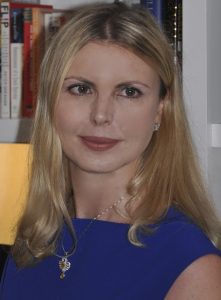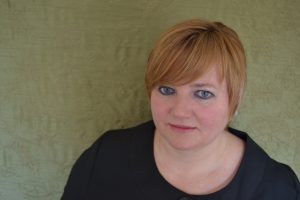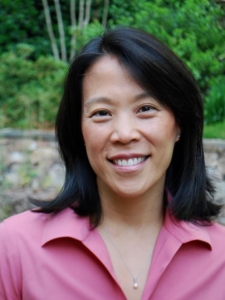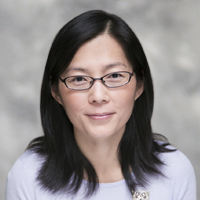 To be an effective leader, you need to know what you don’t know, says Katina Stefanova, CEO and CIO of Marto Capital. “When we go to college, the educational system teaches us to know the right answer to any question, but the ability to adapt and accomplish results comes from knowing what we need to learn. We need to focus our time on what we don’t know and don’t see, which is an incredibly important quality for any leadership position.”
To be an effective leader, you need to know what you don’t know, says Katina Stefanova, CEO and CIO of Marto Capital. “When we go to college, the educational system teaches us to know the right answer to any question, but the ability to adapt and accomplish results comes from knowing what we need to learn. We need to focus our time on what we don’t know and don’t see, which is an incredibly important quality for any leadership position.”
Creating Success in the Financial Services Industry
Originally from Bulgaria, Stefanova came to the United States at the age of 18 with a one-way ticket purchased by her Grandfather and $200 in her pocket. From that, she built a career that eventually led to becoming founder and CEO of Marto Capital, an emerging multi-strategy asset manager.
After arriving in America, she attended Brigham Young University as an undergraduate then entered the finance and technology field. “I was in the right place at the right time, on the West Coast during the dot-com boom,” she says.
She began her career in Arthur Andersen’s M&A division, then worked for AdRelevance, where she led international business development for this media startup (which was eventually sold to MediaMetrix). Following the sale, she moved to London to become Director in IBM’s Business Strategy team in the EMEA region.
When she returned to the United States, she switched to the asset management industry, earning her master’s degree from Harvard Business School and joining Bridgewater, where she spent nearly 10 years in investment and senior management roles as the company rapidly grew.
Along the way, Stefanova’s most profound learning experience has been working with amazing mentors during the most formative parts of her career, including Bridgewater’s Co-CEO Eileen Murray and Founder Ray Dalio.
Introducing A New Paradigm With Her Firm
Two years ago, Stefanova left Bridgewater to start her current firm, which is on the vanguard of the alternative asset management industry. She considers her work building Marto Capital, as not just a “job,” but a calling. “If my team and I do it right, it will be great for investors and the industry.” And she adds, “This a tough industry, but I want what I do today to be meaningful not only to me, but to my daughter.”
The industry was in need of a new way of thinking. She sees a giant misalignment of interests between many alternative asset managers and investors – particularly a lack of transparency and a lack of alignment of economic incentives. This disconnect has led to a culture of mistrust between asset managers and their clients. Katina’s goal is to rebuild that sense of trust through its solutions and business model.
“Historically, when you consider successful asset management firms and financial institutions, you think of optimizing for financial capital,” she points out. But at Marto, they add social capital into the equation. Through that prism, they are working to address current problems such as underfunded pension systems by implementing smarter investing for pensioners and retirees.
“Everything else follows if you keep positive social outcomes as your goal,” she says. “We are here to make money for our clients, but we also are focusing on operating with a level of integrity and transparency that allows us to avoid prevalent ethics issues.”
She believes that women are particularly well suited to this model, because of their empathy and ability to look at clients holistically, based on the belief that it is as important to have a positive impact as it is to make money.
Remaking the Industry for Women
The lack of network and support in the industry can be a barrier for women. “The decision makers who manage alternative assets are still white men over the age of 50, and that makes it difficult for those who are not in the group,” she says. “It’s still a cliquish industry and even women with capabilities and experience find that our networks are not at that level.”
Unfortunately, that lack of role models, combined with the reputation of the asset management industry’s insensitive culture, may be one of the reasons that young women she talks to are shying away from the industry.
But she says that’s a mistake. “Collectively, as female leaders in the industry, we need to focus on changing and elevating the culture. Don’t be afraid to enter because it’s a fantastic place where you can have a lot of impact and be a trailblazer.”
And as women like herself rise through the ranks, she sees the immense opportunity for her experienced peers to start businesses and take leadership positions in asset management firms. “It’s crucial that we not take ourselves out of the game, even though it’s difficult, because it’s worth it when we succeed.”
She believes that this generation is the one who can make the difference, given their critical mass: If women assume more leadership roles over the next five or 10 years, it will help make up for the way the industry has historically lagged behind others in the presence of women in leadership positions.
Altruistic Endeavors Outside of Work
With two children, ages 13 and six, Stefanova aims to combine work and home life for optimum fit. But that doesn’t mean that she doesn’t continue her trailblazing efforts, even outside of work.
Stefanova sits on the board of technology startups that are relevant to the asset management space and acts as an angel investor in tech firms.
She also maintains board positions with three important organizations: Women Sphere, which helps support women in STEM fields; One Heart Bulgaria, which works with orphans and children who are less privileged in her home country; and Aspire, which helps prepare high school and college students around the country for the work world.
 Several years ago diversity became diversity and inclusion. What does this mean? Well I am not going to lie, for most firms even if they have it in the title of a department, it means nothing just another buzzword.. If it is done properly however, inclusion is the most powerful tool a leader or manager can have in their toolkit because it can provide something that is the basis for individual and team performance. How do you become an inclusive leader , manager or person? Psychological safety at work- yes that’s right and studies have been exploring this for years, as has Google more recently with something they call Project Aristotle. They discovered that just by having a genius or two on the team, you are not going to get the best results. However if you have a team environment where people can feel, as well as think and be themselves (expressing themselves is really key here and being heard) then no matter who is on the team, the result is productivity. There are many factors to high performing teams for sure but Google’s data indicated that psychological safety, more than anything else, was critical to making a team work. This certainly makes sense if you think about it. Women (and anyone who does not fit the mold of the traditional work persona /expert) can find space to connect with others talking work and/or any other topic of shared interest.
Several years ago diversity became diversity and inclusion. What does this mean? Well I am not going to lie, for most firms even if they have it in the title of a department, it means nothing just another buzzword.. If it is done properly however, inclusion is the most powerful tool a leader or manager can have in their toolkit because it can provide something that is the basis for individual and team performance. How do you become an inclusive leader , manager or person? Psychological safety at work- yes that’s right and studies have been exploring this for years, as has Google more recently with something they call Project Aristotle. They discovered that just by having a genius or two on the team, you are not going to get the best results. However if you have a team environment where people can feel, as well as think and be themselves (expressing themselves is really key here and being heard) then no matter who is on the team, the result is productivity. There are many factors to high performing teams for sure but Google’s data indicated that psychological safety, more than anything else, was critical to making a team work. This certainly makes sense if you think about it. Women (and anyone who does not fit the mold of the traditional work persona /expert) can find space to connect with others talking work and/or any other topic of shared interest.







